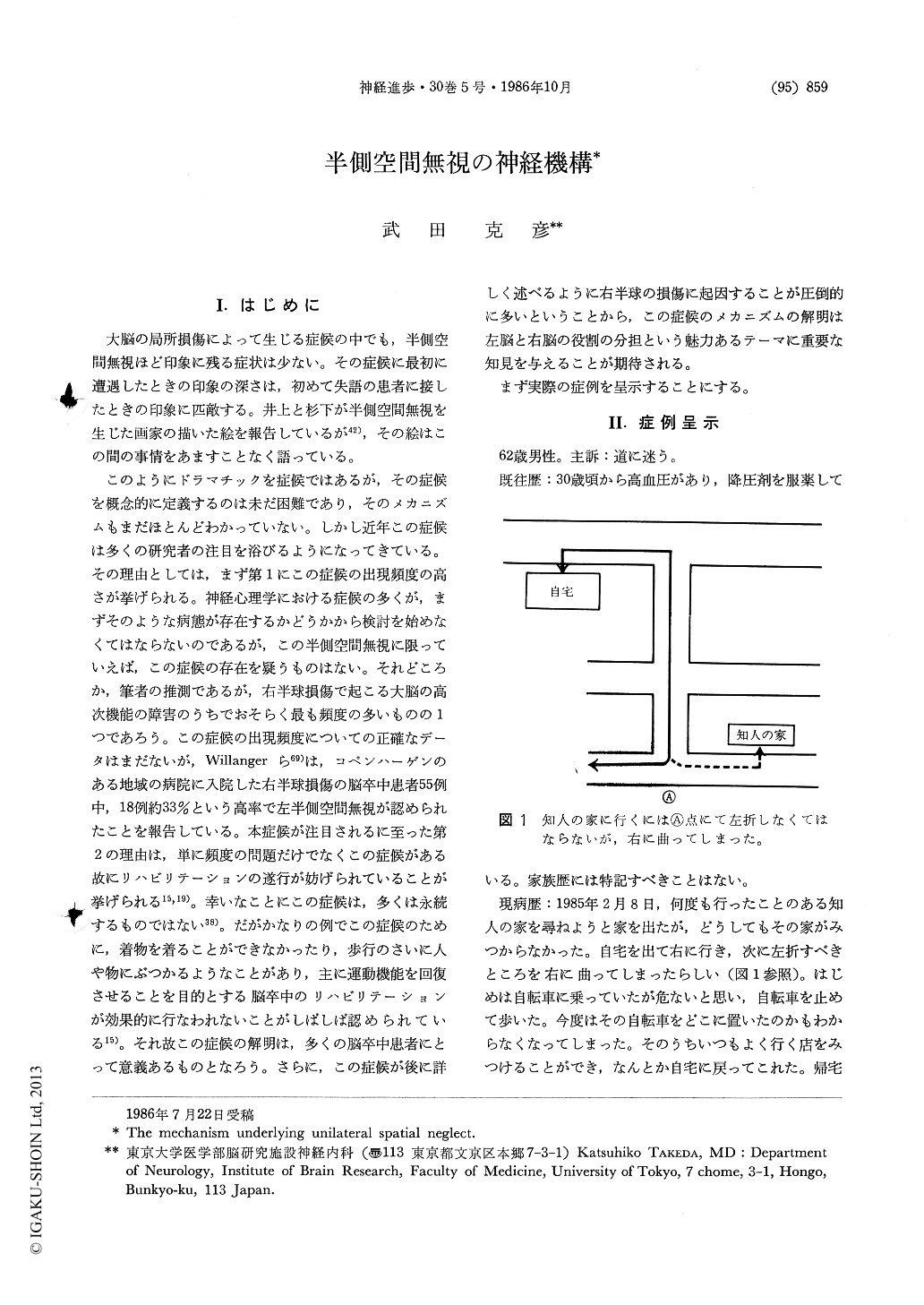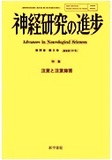Japanese
English
- 有料閲覧
- Abstract 文献概要
- 1ページ目 Look Inside
I.はじめに
大脳の局所損傷によって生じる症候の中でも,半側空間無視ほど印象に残る症状は少ない。その症候に最初に遭遇したときの印象の深さは,初めて失語の患者に接したときの印象に匹敵する。井上と杉下が半側空間無視を生じた画家の描いた絵を報告しているが42),その絵はこの間の事情をあますことなく語っている。
このようにドラマチックを症候ではあるが,その症候を概念的に定義するのは未だ困難であり,そのメカニズムもまだほとんどわかっていない。しかし近年この症候は多くの研究者の注目を浴びるようになってきている。その理由としては,まず第1にこの症候の出現頻度の高さが挙げられる。神経心理学における症候の多くが,まずそのような病態が存在するかどうかから検討を始めなくてはならないのであるが,この半側空間無視に限っていえば,この症候の存在を疑うものはない。それどころか,筆者の推測であるが,右半球損傷で起こる大脳の高次機能の障害のうちでおそらく最も頻度の多いものの1つであろう。この症候の出現頻度についての正確なデータはまだないが,Willangerら69)は,コペンハーゲンのある地域の病院に入院した右半球損傷の脳卒中患者55例中,18例約33%という高率で左半側空間無視が認められたことを報告している。
In order to evaluate the patients with unilateral spatial neglect (USN), the observation of the patients' behavior is requisite in addiion to the various routine test such as 1) line bisecton test, 2) copying of model drawings, and 3) Albert's test.
Although several authors have attributed the original description of this disorder to Holmes, he actually reported the patients with disturbed visual orientation from bilateral lesion. The first descrip-tion of the real unilateral spatial neglect should be credited to Paterson and Zangwill (1944) who reported the patient who did not eat the plates put on the left side of the table as well as failed to copy the left side of drawings.

Copyright © 1986, Igaku-Shoin Ltd. All rights reserved.


